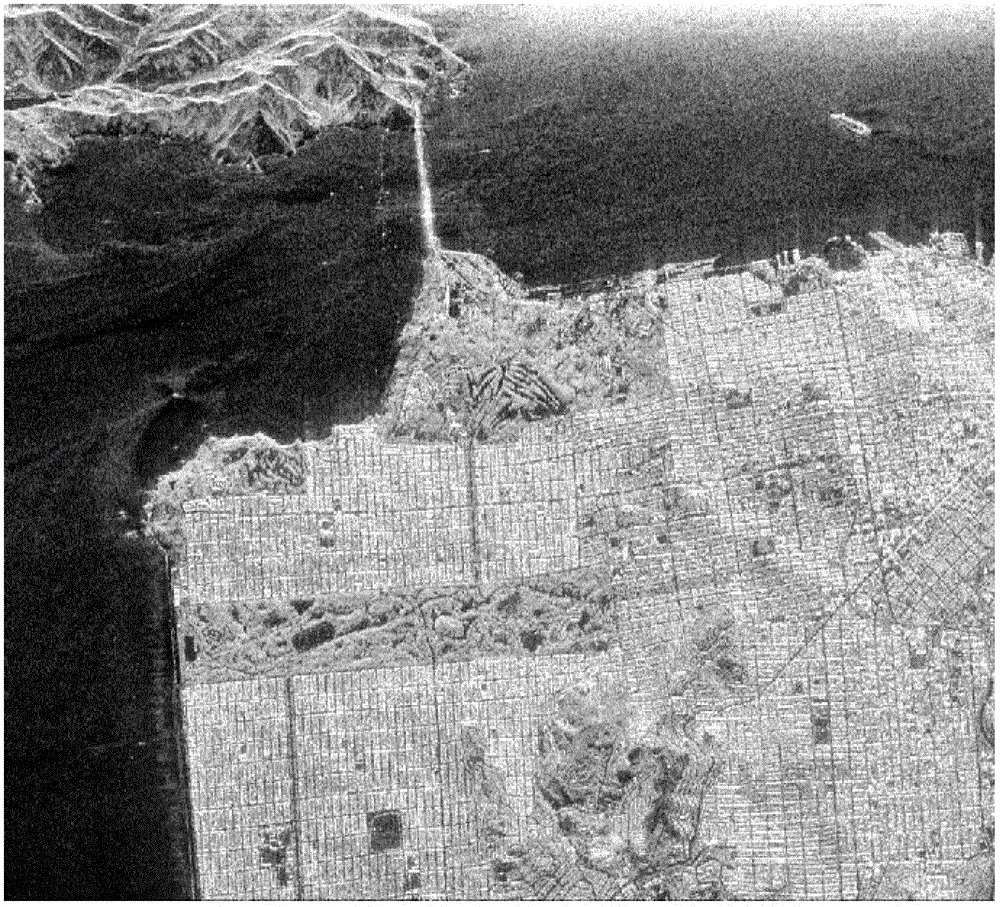Classification Method of Polarization SAR Image Based on Spectral Clustering
A classification method and spectral clustering technology, which is applied in the field of polarimetric SAR image classification based on spectral clustering algorithm, can solve problems such as unbearable amount of calculation and storage, hindering the performance of the algorithm, and deteriorating performance of the classifier. The effect of reducing the amount of calculation and storage, good regional consistency, and clear edges
- Summary
- Abstract
- Description
- Claims
- Application Information
AI Technical Summary
Problems solved by technology
Method used
Image
Examples
Embodiment Construction
[0047] refer to figure 1 , the specific implementation steps of the present invention are as follows:
[0048] Step 1, filter the polarimetric SAR image to be classified.
[0049] Select a polarimetric SAR image to be classified, with a size of R×Q. Two images are selected in this experiment, one is the original San Francisco polarimetric SAR image, the size is 900×1024, and the other is the original Flevoland The polarimetric SAR image of farmland has a size of 215×315. The polarimetric SAR image to be classified is filtered to remove speckle noise. The filtering method used is the refined polarization LEE filtering method, and the size of the filtering window is 7×7.
[0050] Step 2: Cloude decomposition is performed on the coherence matrix T of each pixel of the filtered polarimetric SAR image, and the scattering entropy H feature is extracted.
[0051] (2a) Read in each pixel of the filtered image, these pixels are a 3×3 coherence matrix T containing 9 elements;
[0052...
PUM
 Login to View More
Login to View More Abstract
Description
Claims
Application Information
 Login to View More
Login to View More - R&D
- Intellectual Property
- Life Sciences
- Materials
- Tech Scout
- Unparalleled Data Quality
- Higher Quality Content
- 60% Fewer Hallucinations
Browse by: Latest US Patents, China's latest patents, Technical Efficacy Thesaurus, Application Domain, Technology Topic, Popular Technical Reports.
© 2025 PatSnap. All rights reserved.Legal|Privacy policy|Modern Slavery Act Transparency Statement|Sitemap|About US| Contact US: help@patsnap.com



